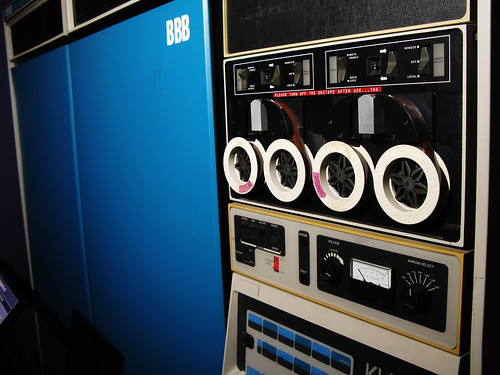
I’m kinda getting a little annoyed with my cyclecomputer. It’s a very simple unit from the bargain rack, and it’s vulnerable to interference and I don’t always trust the numbers it gives. Every so often, the battery on the speed sensor starts gets loose enough that I have to remove it, bend the battery contact outward, and then put the battery back in. This is annoying. And then it randomly stops working otherwise. It’s getting worse.
The problem is that looking at the cyclecomputer is one of the ways I motivate myself. I’ve also found that I’d like a little more functionality out of it. But, like all things, I think too much, which probably means that I could probably be slowly reading cyclecomputer reviews for the next century and not be happy with my decision.
Big feature there is that I want to contend for the Ultramarathon Cycling Association Year Rounder, and I’d like to be able to send them a graph instead of collecting receipts and witnesses.
Here’s the long version of my thoughts:
The electrical engineering profession has been awfully good at figuring out how to put more functionality into a smaller package. In the early days, it would be something that you’d have to purchase specially configured, but over the past 10 years or so, they reached the point where anybody can purchase off-the-shelf a single chip (A “microcontroller”) that has just about everything you’d really need to make a variety of different computer controlled devices. Just use the bits that you actually need and leave the rest of them alone, so that the factory doesn’t need to customize anything.
We are also at the point that basic wireless components like a data link or GPS are available as tiny modules that you can slide into an existing design without being an RF expert.
Also, other surrounding systems have changed. In order to locate the user in case they get lost and call 911, most cellphones have some degree of GPS. Bikes are starting to get electronic shifting, although nobody knows if it’s going to actually catch on. Most everybody has a computer, so downloading maps to the cyclecomputer or uploading tracks becomes something that everybody might want to do.
To me, this all means that the exact set of expectations for what the Captain Dashboard type is going to have on their dashboard are in flux. And, unless the cyclecomputer folks start sending me cyclecomputers to try out, agonizing over spending money.
My problem is that I’m a log-junkie. I don’t want logs because I think I’ll be able to play back my rides and glean some sort of information useful to make me better at cycling with the help of a coach. I want logs because I can then plot them against a map and see how far I went, how fast I was, and how powerful I was pedaling. It’s more amusement than training. And, like I said, good for the Year-rounder challenge.
If I just wanted a cyclecomputer bristling with features, that’s available from a bunch of players and, thus, they are competing about making the most durable and functional computer for the least amount of money. But the logging is only available on a fairly small number of units, most of them fairly expensive.
Sadly, GPS chipsets still take a fairly large amount of power. An athlete in training is going to be perfectly happy with a GPS unit that needs to be charged after every ride. Ten hour battery life is totally fine for them. Whereas I like to be able to hop on my bike and ride and I’m wanting to do long cycling tours or maybe randonees or other such mischief down the road, so I worry about keeping the battery charged and remembering to remove it from the charger and whatnot.
The Sigma ROX interests me. It’s got a long battery life on just a coin cell because it doesn’t need to power a GPS. It’s cheaper than the other cyclecomputers, but knowing what I know about how things fit together, I understand that the cost of the ROX is mostly marketing and product development and very little for the added complexity.
On the other hand, there’s also the Garmin GPS units. I have a bad feeling that, because I see so many people on the high-end being fans of them, that they represent a gold standard that everybody is too scared to violate. I mean, it would be like showing up to a road race on an aluminum frame. The shock! Apparently, the randonnee folks aren’t totally against them, it’s just that they keep them topped off via the USB link and an external charger.
In my mind, there are plenty of features to be added to cyclecomputers that are just barely being explored. I’m not a racer, but if they can be added to an existing design and used, it’s still an appealing feature. So, clearly there’s room for these features to be added and successfully, once people think them up. If you look at how the iBike figures power and browse what sort of solid-state sensors are available, you start to realize that there’s huge potential to be had. We’re even seeing some standardization, where many of the higher-end cyclecomputers use the ANT+ protocol, such that any of them will work with a power meter. In theory you can even use a sensor from one manufacturer and a cyclecomputer from another, but I’m betting that it doesn’t work as well as you’d think.
Ugh. Either way, they are similar enough in price, that I’m kinda having problems deciding… and my mother-in-law wants to get me something for my birthday.